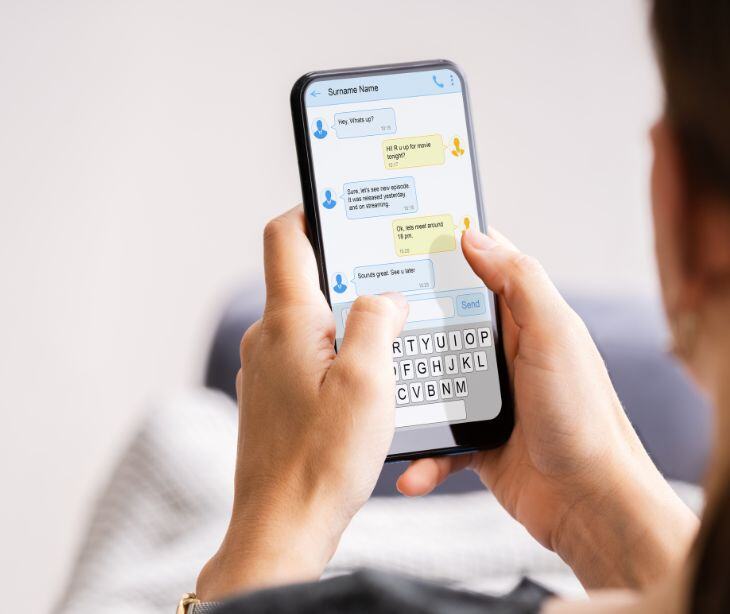
Automated texts are pre-scheduled messages that deliver timely information to designated recipients. Healthcare practices can leverage this strategy to boost engagement and create better connections with patients.
1. Issue appointment-related reminders
While patients may miss appointment reminders sent over other channels such as email, text messages have an estimated 98% open rate. This makes it a reliable option for providing time-sensitive updates. Make sure to incorporate all necessary information into reminder texts, such as your facility's location and whether patients will need to arrive early to complete any paperwork. If possible, offer the ability to reschedule via text so that open spots can be filled quickly.
Automated appointment reminder texts lower the chance of no-shows, which often lead to delays in operations. They also eliminate the need for manual scheduling and coordination. As a result, staff can focus their efforts on more mission-critical tasks.
Along with sending updates about upcoming appointments, consider delivering automated reminders when it's time to schedule a follow-up or annual screening. This keeps patients on track with their care plans and encourages them to take more ownership of their health.
Make sure your practice is engaging in HIPAA compliant text messaging by obtaining patients' consent to communicate with them in this manner. Consent forms should thoroughly explain the full scope of texting communication and patients' right to opt out at any time.
In addition, train employees on the importance of following HIPAA's Minimum Necessary Standard when texting. This involves leaving any identifiable data out of messages. Stick to the essential details in appointment reminder texts, such as the patient name, meeting time and location, and your practice's contact number. Exclude sensitive information like the patient's condition or treatment plan.
2. Request feedback
Automated texts are a great way to collect valuable feedback from patients. These insights can then determine what works well and which areas need improvement.
Set up automated text messages for patients who recently visited your practice, directing them to a brief online evaluation survey or questionnaire. Include a space at the end where they can provide additional comments on their experience. To improve your practice's visibility and reputation, consider thanking highly satisfied respondents for sharing their feedback and encouraging them to write a review.
Keep surveys clear, simple, and free of medical language to prevent any potential confusion. Ask about the quality of care, attentiveness, and communication from the provider. Also, cover pre-appointment topics such as the ease of online scheduling, waiting area cleanliness, and professionalism of office personnel. Don't forget to provide context by explaining the goal of the survey and how their answers will be used.
Sending feedback requests via text is non-disruptive and allows patients to engage with minimal effort. At the same time, automating this approach enables practices to seamlessly learn how to improve patient outcomes.
3. Keep patients informed
Beyond delivering time-sensitive updates, automated texts can proactively support patients' ongoing care journey and build a stronger sense of community. For instance, practices may promote upcoming health events and initiatives such as blood drives, flu shots, or wellness challenges.
Go one step further by segmenting your outreach list and providing updates on new services directly relevant to patients' health needs. Another option is educating patients on emerging developments or available treatments for their condition. Personalizing these text messages helps patients feel appreciated, ultimately improving loyalty to your practice.
To effectively customize these messages without putting patients' sensitive data at risk of exposure, you will need to sign a BAA with a HIPAA compliant texting platform. These solutions are equipped with the robust safeguards required by HIPAA, such as access controls and data encryption at rest and in transit. With a BAA in place, third-party vendors are held accountable for securing protected health information (PHI).
Subscribe to Paubox Weekly
Every Friday we'll bring you the most important news from Paubox. Our aim is to make you smarter, faster.




